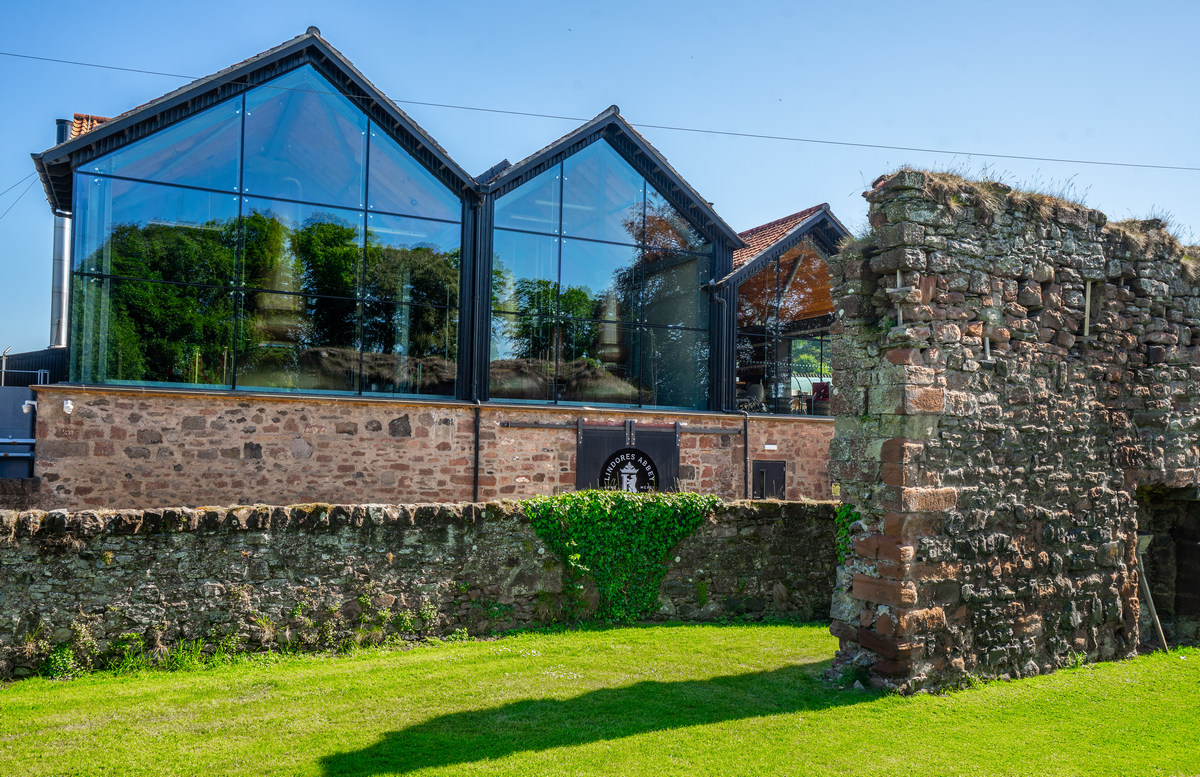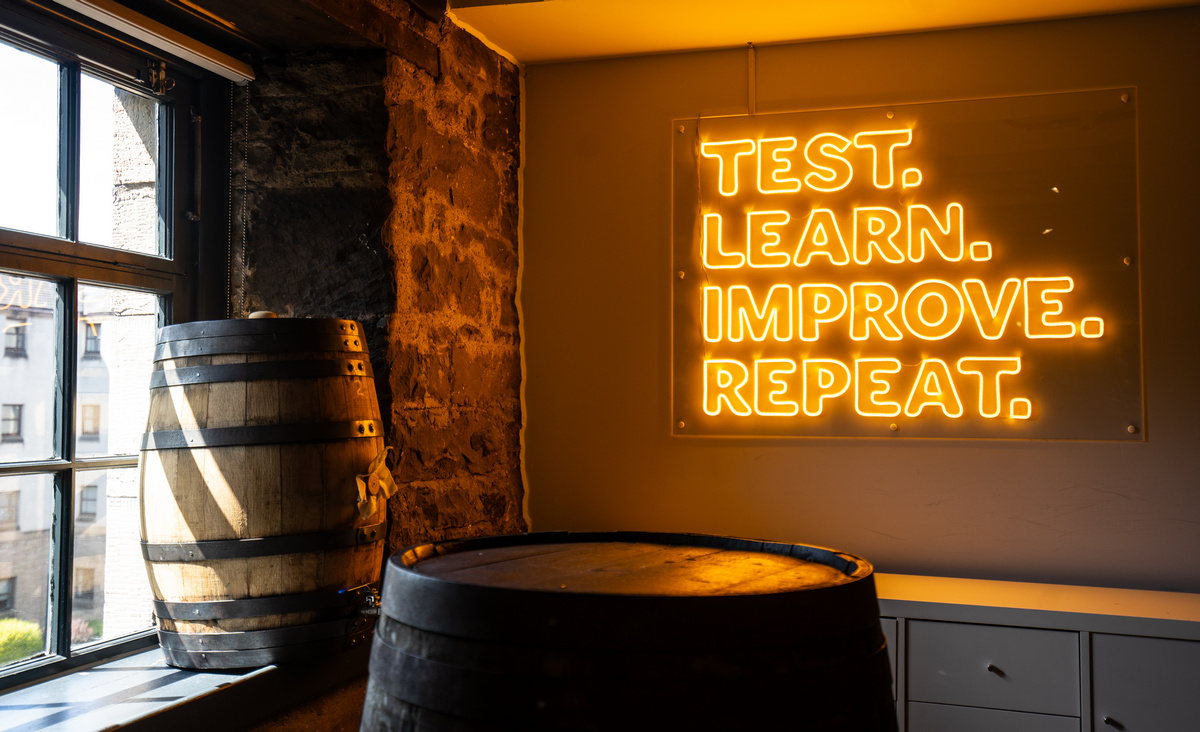
Story by Cara Devine. Cara is our Melbourne-based drinks writer. She is the manager of Bomba in Melbourne and the face and talent behind the cocktailing YouTube channel Behind the Bar. You can email her at behindthebarchannel@gmail.com
Photography by Fred Siggins
With my Scottish heritage, people often assume that I was raised sipping on single malts the same way French children are introduced to watered-down wine with dinner. It is true that my Granny deployed the whisky on the gum’s technique for teething (and also in an attempt to raise my goldfish from the dead, but that’s a story for another time) but the fact is that I am old enough that whisky was just not fashionable in my formative years. It was my Grandpa’s generation, who would nurse ‘hauf and haufs’ (a nip of blended whisky and a half pint of lager) in pubs named things like Bird in the Hand while perusing the newspaper. Thankfully, I have found the light later in life; the same cannot be said for my father, who has to politely push drams in my direction when poured by bartenders excited by his accent on his trips to Australia – he much prefers a G&T, for anyone taking notes.

My journey is mirrored in the whisky world in general. After a few decades in the wilderness, while vodka and dry white wine reigned supreme, whisky is back, baby. And, of course, this renewed interest has been welcomed with open arms by its spiritual home – Scotland. On a recent trip home, it was clear the tourist industry was booming with whisky tourism in particular playing a key part. Of course all the big players are present and correct – the new Johnnie Walker experience in Edinburgh is a mecca to malt – but there is also a new generation bringing innovation both to the spirit itself and the way it is presented, making it clear that the Land of the Brave does not want to rest on its laurels with the rise of global competitors.

The first written reference to the production of Scotch comes in tax records in 1494: “Eight bolls of malt to Friar John Cor wherewith to make aqua vitae.” Of course, us naughty Scots had definitely been making aqua vitae previously, so this more marks the end of…shall we say, our self-appointed tax exemption. The site this was in reference to is Lindor’s Abbey, and the abbey ruins still remain but are now adorned by a shiny new distillery and visitor’s centre by the same name. While still young, the spirit is great and they are playing with interesting cask finishes (within the strict rules that govern Scotch whisky – they have to be oak casks, for instance). I even spied some Australian wine casks which had made the long trek over. They also have an aqua vitae, a recreation of the type of spiced whisky (‘botanical spirit’, as they characterise it) as would have been in vogue when they first entered the history books, using spices, dried fruit and locally grown green herbs such as Douglas fir and sweet cicely, a fun and modern interpretation of an ancient style.
As consumers have become more discerning, constantly searching for something ‘different’, we have seen a rise of independent bottlers. ‘Indies’, as they are affectionately known, choose a cask that they like from a distillery and buy it. They could then bottle it straight away, or they age it longer themselves, quite often in different casks than the distillery itself usually uses.
In Edinburgh, I bumped into a familiar face – Conor O’Keeffe spent some time in Melbourne at gold standard whisky bars such as The Kilburn and Whisky & Alement before heading back North and taking up distilling. He is at Holyrood distillery, a city distillery with a massive focus on innovation, especially when it comes to yeast strains, a variable which is often little discussed and played with in the whisky world. “Our mission from day one has been to create complex and tasty whisky at any age. To do this we use specialty and heritage malts alongside varied yeast strains from the worlds of brewing, wine, spirits and even baking.” I tried some new makes using sake yeast, and the yeast used in making mezcal, and both had the undeniable flavour fingerprints of sake and mezcal. It was quite bizarre, and exciting! Definitely one to watch.
As consumers have become more discerning, constantly searching for something ‘different’, we have seen a rise of independent bottlers. ‘Indies’, as they are affectionately known, choose a cask that they like from a distillery and buy it. They could then bottle it straight away, or they age it longer themselves, quite often in different casks than the distillery itself usually uses. This is a reaction to the house style and consistency that ‘original bottlings’ (whisky put out by the distilleries themselves) strive for. These bottlings are often a little quirky, usually bottled as single cask and cask strength, or close to.

The Scotch Malt Whisky Society is one of the most well-known. They have been bottling single casks for close to 40 years, and a visit to their ‘vaults’ in Leith is a near-religious experience. With esoteric names such as ‘Fisherman’s Friends on the Beach’ and ‘Buttery Baked Corn on the Cob’ the focus is very much on the flavour of the liquid and their archives offer an overview of changing whisky styles and tastes.
The best selection of indies I found was at Casc bar in Aberdeen, where the entire feel of the venue mimics the ‘breath of fresh air’ style of indies. Rock music blasts, and a huge tap list of craft beer allows you to choose the perfect lambic, saison or Scotch ale to pair with your dram. No chesterfields and stuffiness here, although there are cigars.
Scotland has a tough job; how to stay relevant without losing connection to the history that made it an industry heavyweight and a whisky destination to begin with? From what I saw, they are doing a great job. Yes, I will have a ‘hauf and hauf’, but what’s in my glass may be a little more interesting than what was in my Grandpa’s.

